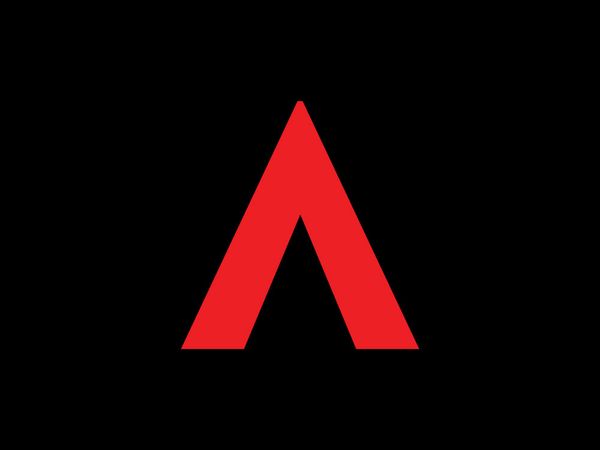The 2016 Formula One World Championship continues this weekend with Round Six, the Monaco Grand Prix, from the Circuit de Monaco
Lewis: "It's an incredible feeling, making a car dance through those streets"Nico: "Monaco is the ultimate driver's track"Toto: "It's clear that we are under attack from more than one angle"Paddy: "Monaco is a track where driver skill very much comes to the fore"Featured This Week: Driving Forwards Through Data
Lewis Hamilton Barcelona was the worst feeling but, like I always say, the true test is how you get back up when you've been knocked down. It was a tough moment for all of us after the race but it's now chapter closed and looking ahead to Monaco. It's an incredible feeling making a car dance through those streets, one of the purest thrills you can have in a racing car. I've not had the best run of results in Monaco in recent years - but last year showed I have the pace to do the job. It's always a different weekend to the rest, with the extra day, the boats in the harbour and sleeping at home; that makes it fun because the whole rhythm is something else to the rest of the season. I'm approaching this weekend with only one result in mind. Nico Rosberg I was gutted after what happened in Spain - for myself, but mostly for the team. We're in this together and I know how hard everybody works to make these amazing cars, so for us to leave them both in the gravel is the worst possible scenario. But we've talked it through and now it's time to leave it in the past. It's one of my home races next in Monaco - the ultimate driver's track. It's where I grew up and where I still live today, so that always makes it a special weekend. I have memories from every corner going right back to my school days and I always have great support there from my family, my friends and the fans, which gives you that extra boost through the weekend. It's been amazing to win there for the past three years - but I know it will be tough to repeat that with Lewis, the Ferraris and the Red Bulls all so strong now. I'm feeling confident, so bring on the battle! Toto Wolff, Head of Mercedes-Benz Motorsport Clearly, Barcelona was tough to take. We came away upset at an opportunity missed - but this is racing. The drivers know how we operate. The team is responsible for giving them the best possible cars and they are responsible for getting the best out of them - and for bringing them home. When we let them down, we apologise to and the same goes the other way. It's a pretty normal culture - we deal with setbacks together and we move on. Now, we go to Monaco and a very different challenge. Once again, we have seen our competitors make steps forward which have given us an even bigger battle on our hands. Red Bull came out on top in Barcelona after a close fight with Ferrari, so it's clear that we are under attack from more than one angle. We cannot afford to drop the ball, so we must remain united, remain strong and hit back hard this weekend. Paddy Lowe, Executive Director (Technical) Monaco is a unique circuit requiring unique characteristics from the car, so you can never approach this race with absolute confidence in the performance of your package. That confidence is something which may only grow through the weekend, as the team fine-tunes the car and the drivers dial themselves in to the track. Of all the circuits on the calendar, this is the one where practice is most crucial. If the drivers are to get that ultimate qualifying lap, which is so important given the difficulty in overtaking around Monaco, they need all the track time they can get to find their rhythm. A lap around this circuit requires inch-perfect positioning of the car at every corner - each of which leaves no room for error. It's a track where driver skill very much comes to the fore - although, as always, the team plays a crucial role in ensuring the car is adapted to the specific demands of the circuit and gives the driver confidence to find the limits. This weekend sees the first appearance of the Ultra Soft tyre - which will be particularly interesting given that even the Super Soft has arguably been too hard for this circuit in recent years. We're looking forward to seeing what kind of lap time improvement that might bring - and perhaps even a new lap record. It's set to be an intense battle between ourselves, Ferrari and Red Bull, so we'll need a perfect weekend to come out on top. Featured This Week: Driving Forwards Through Data Formula One is very much a data driven sport. How much has it changed over the years? Data is a huge part of how modern Formula One cars are developed and run. Thirty years ago, when extracting data was in a pioneering stage, the first data logger had only eight channels and could record a single lap at a low data rate. As the cars passed the pit wall, teams would have to try to glean as much as they could from just a few seconds of data transfer. Today, thousands of channels of data are streamed from hundreds of sensors within the Power Unit, gearbox, suspension and bodywork, with complete coverage around a lap of most circuits on the calendar. The overall image the team receives from the car on track has increased a thousand fold. Put into context, the data rate a team can now extract from pressure tappings on a small area of the floor alone is ten times that used in the Apollo space missions. With restrictions on track testing, how important is collecting data during a race weekend? In the past, teams would test for two or three days between every race. Today, track testing is restricted to just eight days before and four days during a season - forcing teams to use race weekends as part of their R&D programme. Track time is now not only used to get the best out of a car for that event - but also for future development. Much of modern Formula One engineering is carried out by simulation, with teams modelling a car in the virtual world before producing physical parts or systems. However, to be effective, these tools have to be based on the most realistic models possible - and the only way to accurately calibrate those models is via real track data. How does the team approach the challenge of gathering data for both purposes in such a limited time frame? Some data is sent back in real time through a high frequency telemetry system, which transmits data from the moving car to the pits. However, there is far more data available than can be extracted via that route. The excess has traditionally been transferred using a wired connection once the car has stopped - but even that is problematic, as crucial track time is lost waiting for the download to complete. This is where Technical Partner Qualcomm has helped the team optimise track time. Engineers are now able to download that balance of data - which can be very bulky - in the time between when the car stops in front of the garage and is wheeled back into the garage via an extremely powerful wireless connection. From where is the greatest benefit of this system derived? The most noticeable benefit comes in understanding tyres via the infra-red camera system - and more specifically the speed at which information from that feed can be processed. In the past, the crew would plug in the cameras when the driver returned to the box and have just a few seconds to extract as much data as possible before the car returned to the track. There simply wasn't enough time to extract the full data set until after a session, so the real-time nature of that data was lost. Qualcomm's technology allows the team to extract that information much more quickly. By the time the car pulls back into the garage, the engineers have now received that information wirelessly. How does this technology affect the driver out on track? Aside from significantly faster data transfer in the pit box, the on-board SnapDragon processor can extract information and stream it live to the pit wall via the telemetry system - allowing the engineers to seeing what the driver is doing through each corner before he gets to the next one. With this information, the team is then better placed to fine-tune car setup and provide the driver with more information at the beginning of each run. This reduces the need for a driver to adjust the balance of the car around a lap, allowing him to focus on getting the most from the car. How relevant is this to the everyday motorist? Formula One is becoming increasingly road relevant. Technology developed within the paddock has been trickling down into consumer vehicles for a number of years - but has reached a whole new level under the Hybrid Power Unit era, where Formula One has set the benchmark in terms of efficiency potential from an internal combustion engine based power plant. Today, the sport is reliant on data to analyse performance and diagnose problems - something which will also feed down to the everyday motorist. Qualcomm are a big player in the automotive world - and the pioneering technology they are now applying to the Silver Arrows will undoubtedly support their work also in the consumer automotive arena.



























